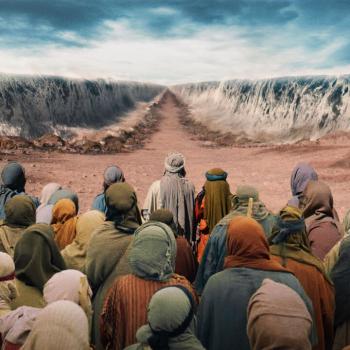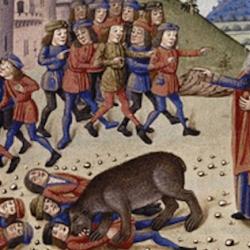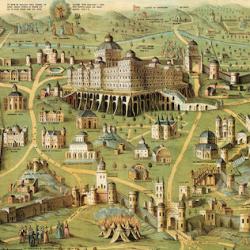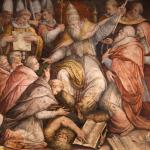INTRODUCTION
Prophets were involved from the beginning of the monarchy, but Israel’s prophets did not interfere with Gentile politics during the days of Saul, David and Solomon. Now, for the first time, a prophet anoints a Gentile king, and this initiates several centuries of prophetic ministry toward the Gentiles. Israel fall means riches for the world.
THE TEXT
“Then Elisha spoke to the woman whose son he had restored to life, saying, ‘Arise and go, you and your household, and stay wherever you can; for the LORD has called for a famine, and furthermore, it will come upon the land for seven years.’ So the woman arose and did according to the saying of the man of God, and she went with her household and dwelt in the land of the Philistines seven years . . . .” (2 Kings 8:1-29).
EXILE AND RETURN
Chapter 8 begins with a brief story about the Shnammite woman. Earlier, through Elisha’s ministry, she had given birth to a son, and had seen her son restored to her after he died (2 Kings 6). That “Passover” event is now followed by an exodus and return. Her story follows closely the story of Israel: She leaves the land because of famine, as Israel did in the days of Jacob. She remains for seven years in exile among the Philistines, as Israel remained for generations in Egypt. When she returns to the land after the exile, she receives her land. The seven years of exile not only refer backward to the Exodus, but also point ahead to the seventy years of exile in Babylon. Elisha is still serving her as a kinsman-redeemer; even though he is not present, his reputation alone is enough to influence the king.
HAZAEL OF ARAM
Elisha is in Damascus even before he is approached by Hazael. We are not told why he is in the capital of Aram, but the fact that a prophet is hanging around a Gentile city is a sign that something unusual is afoot. Hazael comes to Elisha at the behest of his master, Ben-Hadad, another of several sick kings in the book. Unlike Ahaziah of Israel (2 Kings 1), Ben-Hadad knows that there is a God in Israel and knows where to find him. It is a painful reflection of Israel’s state that the Aramean king is more spiritually aware than Israel’s own kings. Ben-Hadad knows that he is a son to the prophet, under the prophet’s direction and authority (v. 9). As in chapter 5, Elisha is a turncoat, assisting the king of Israel’s most important political enemy.
Elisha appears to instruct Hazael to lie to his master (v. 10): Tell him he shall live, but I know that he shall die. Perhaps this is another example of Elisha predicting what will happen without endorsing it (cf. 2 Kings 3:16-19). He knows that Hazael will kill Ben-Hadad and then carry out a war of utter destruction against Israel (v. 12). Like Jesus after him, Elisha knows full well that Israel deserves the judgment that is coming; but like Jesus, Elisha weeps over the prospect. A true prophet prophesies to those he loves.
BACK TO JUDAH
The last part of chapter 8 turns attention to the Southern Kingdom, catching up with the kings following Jehoshaphat. Jehoshaphat cooperated with Ahab on more than one occasion, and that set the pattern for this period of Israel-Judah relations. Jehoshaphat is the head of an ecumenical movement, cooperating with Ahab to be reunited. Once Judah and Israel had attained this level of co-belligerency, Judah began to adopt some of the liturgical practices of the Northern kingdom. Jehoshaphat’s cooperation, we learn here, extends to permission for his son to marry Ahab’s daughter (v. 18).
Israel and Judah are becoming indistinguishable. Even the names are the same. There is a Joram in Judah, as well as in Israel, an Ahaziah in Israel as well as in Judah. The result, as we’ll see in the following chapters, is that Jehu’s zeal against Israel brings judgment also against Judah.
The Southern kingdom thus starts living through the history of the North. The only episode recorded from Joram’s reign is the revolt of Edom. The story is briefly told, but all the details should be familiar: Edom revolts, and Joram goes to suppress the revolt. During the battle, Joram is surrounded by the Edomite army on the field, and attempts to break through the Edomites at night. Though he is able to break free of the Edomites and their chariots, there is no victory, and everyone runs home.
This whole scenario is a reenactment of the revolt of Moab from the N kingdom (2 Kings 3). Moab rebelled after the reign of Ahab. Jehoram went out with Jehoshaphat to suppress the rebellion, they looked like they were achieving a total victory, but then the Moabite king sacrificed his son on the wall and wrath came out and Israel had to retreat: inconclusive, and Moab remained in rebellion. When the kings of Judah follow the ways of the kings of Israel, they can only expect similar defeats.
Ahaziah, Jehoram’s successor, continues his policies of following in the ways of Ahab, and for the same reason, because of family influence. Like his grandfather, Jehoshaphat, he cooperates in wars with the son of Ahab, fighting the Arameans at Ramoth-gilead. Joram of Israel is wounded with the wound that will lead to his death. He retreats the Jezreel, the city where Naboth’s blood is crying out for vengeance, and Ahaziah comes to visit him. All the principals are gathered in one place, waiting for the bomb to drop. In the following chapter, the bomb is detonated, a bomb named Jehu.














